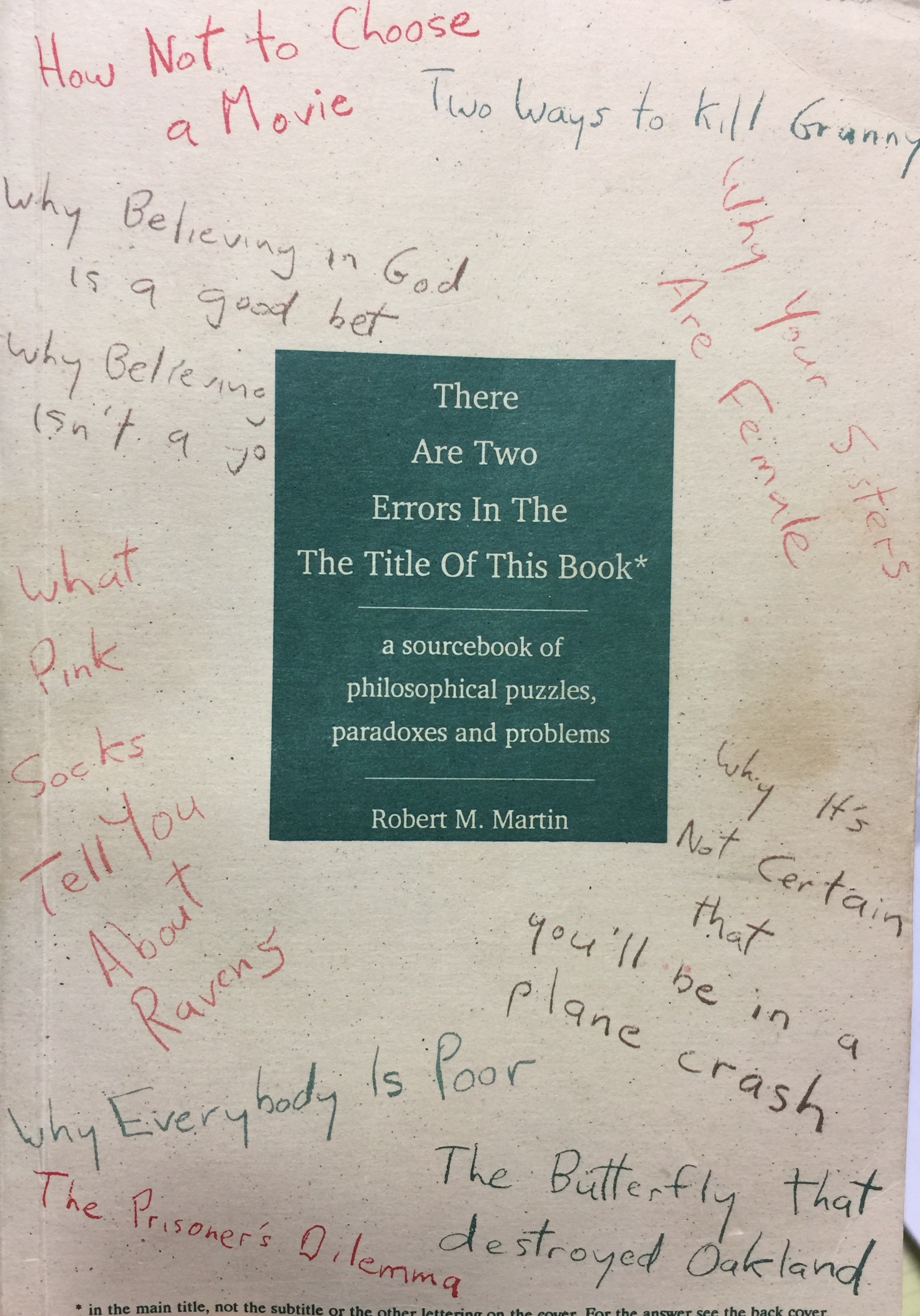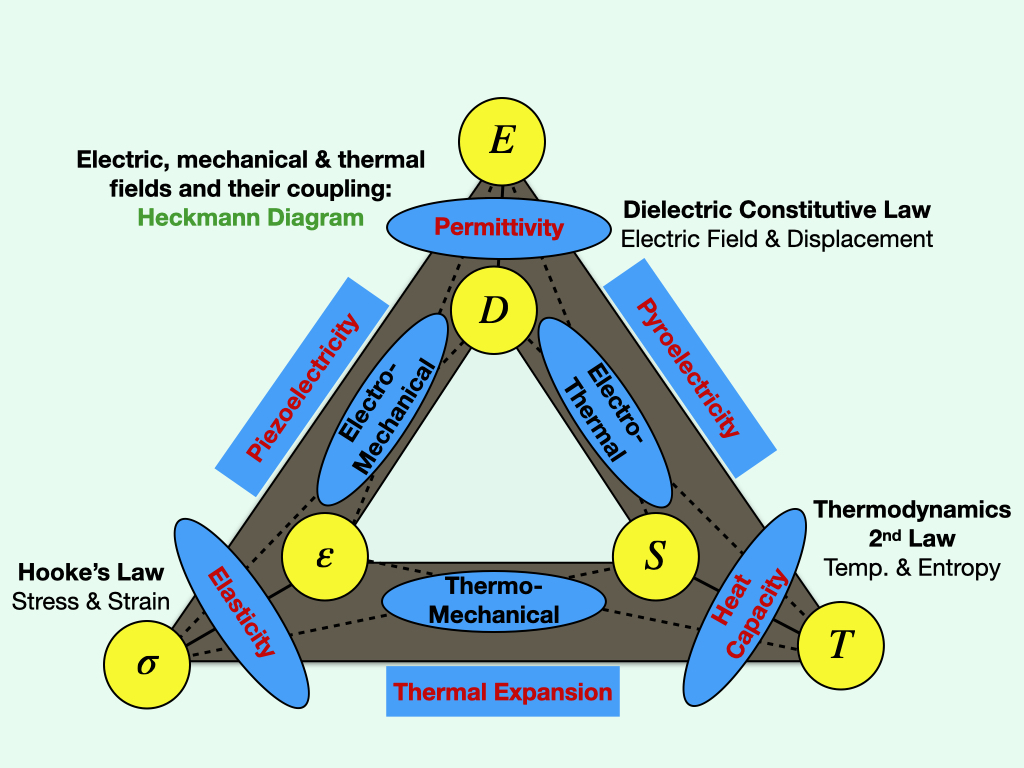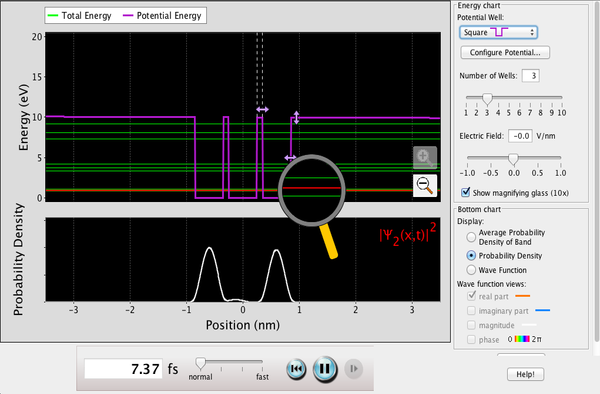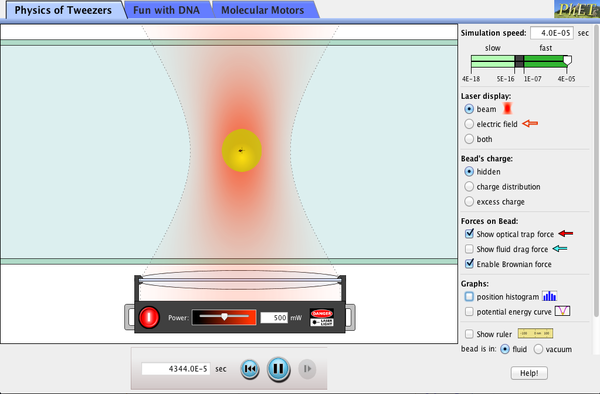|
Week |
|
Hands-on Grapplings |
Pen & Paper Exercises | Computer Exercises | Links | ||||||||
| 1 |
|
Complete your pre-lab
and your reading for the Franck-Hertz experiment Ponder, in your lab notebook, about how far you can take your Franck-Hertz work: What could you, in the lab, learn of the mean free path of a gas? What could you measure (and resolve)? What systematics could you explore? Lab isn't done until you've "seen" the inelastic mean free path! |
Pre-lab #1 Get those Summer Internship Applications out the door! |
Get help with LabVIEW & Digilent installations In lab, you must figure out how to use LabVIEW programming to capture two voltage signals Save to spreadsheet and import into Igor Pro as in Sect 8 of my tutorial |
Reconnect with your lab assistant, Igor: Igor Pro Tutorial To find the locations of peaks that sit atop a rising background (as in Franck-Hertz), use Igor Pro to automatically locate the centroids of your peaks after background subtraction (using, say, a cubic polynomial): look under the menu for Analysis >> Packages >> Multipeak Fitting >> version 2 Read in your waves. Select HELP button to guide you further You'll get three graphs: the top one contains the "Residuals," which are the difference between data and the "first-guess" model. If it isn't too terrible, just click OK in the box at right, and then DO FIT, and then look at the report to find your peak locations (to high precision). In your OneNote, respond to this writing prompt: |
||||||||
|
2 |
|
Write in your lab notebook: How can you calibrate your DAQ? (Each station has a 6.5-digit multimeter) Further steps are described in this brief video Re-read last week's materials on the Franck-Hertz experiment (to be revisited this week) Lab isn't done until you've analyzed your data |
Pen&Paper HW #1 due, start of class Jan. 12: Expansion & Compression Pen&Paper HW #2 due, start of class Jan. 14: Manipulation |
LabVIEW programming HW#1 |
If all measurement is an act of comparison, can we know anything in an absolute sense? Here Michael de Podesta discusses How we Measure the World: (If pressed for time, you might start at 25:06) |
||||||||
|
3 |
|
Come prepared to discuss how you can refine your calibrations Essick's LabVIEW programming workbook has a useful chapter on control of stand-alone instruments (Such as 6.5-digit multimeters) Lab isn't done until you've written your summary in your lab notebook |
Pen&Paper HW #3 due Jan 21: Interactions - Part I |
LabVIEW programming HW#2 |
|||||||||
|
4 |
|
Ponder, in your lab notebook, about what ELECTRICAL properties you could, in the lab, learn about a solid: What can't you measure or resolve? (e.g., could you measure 0.01 Ω? What about 1 GΩ?) What might limit you? What systematics can you explore? Do what might refine your understanding! Lab isn't done until you've completed propagation of uncertainties in your lab notebook |
Pen&Paper HW #4 due Jan 26: Delocalization Pen&Paper HW #5 due Jan 28: Reciprocal Lattice Pen&Paper HW #6 due Jan 31: Elastic Modulus (needed for lab!) |
LabVIEW programming HW#3 |
Projects available to you: Solid-State Physics (What connects up with your Articles of Interest log?) Review your Intro-Level Physics readings on Single-Slit Diffraction, and Multi-Slit Interference The Landauer model treats electrical conductance of a wire smaller than the inelastic mean free path in terms of the interference between all possible paths (That is, electrons are treated as waves.) Have you perused Dr Jaggi's publication list? His latest is entitled: Rare-region onset of superconductivity in niobium nanoislands |
||||||||
|
5 |
|
In your lab notebook, write: How do you extract the Elastic Modulus? Come having turned in Pen&Paper HW #6 Write in your lab notebook: What can't you measure or resolve? (e.g., could you measure a very low stiffness? What about a very high stiffness?) What might limit you? What actions might help you to assess the "reasonableness" of a result? Lab isn't done until you've shared your results and commentary on Piazza |
Pen&Paper HW #7 due Feb 2: Interactions Part II Pen&Paper HW #8 due Feb 7: Non-Uniform Strain |
Catch up on LabVIEW programming: Turn in all due LabVIEW programming HW sets |
Projects available to you: Solid-State Physics (What connects up with your Articles of Interest log?) The applet above requires you give permissions to you computer to run JAVA |
||||||||
|
6 |
|
Write in your lab notebook: key steps from your required pre-lab reading on beam-bending experiments (NON-uniform strain) and from Pen&Paper HW #8 (turned in on time!) The ANALYSIS required in your lab notebook is non-trivial Lab isn't done until you've analyzed your data |
Pen&Paper HW #9 due Feb 11 CONSTRUCT Mechanical Break Junctions Write to refine your understanding: How can you ensure the wire is mounted without slack or slip? In ADVANCE, consider the thickness of the beam, that you affix the gold wire to. What are the advantages of a thicker beam? Can you estimate the range of motion required? What are the advantages of a thinner beam? Data at lower resistance reflects a transition from elastic deformation to plastic flow and material creep. |
LabVIEW programming HW#4 |
Can these labs move you towards your "Top 5"? |
||||||||
|
7 |
|
Construct your apparatus, and prior to measuring the delicate gold wire, first test your data-taking system with a robust 12K resistor in place of the fine wire Quantized steps appear only in the kiloohm regime. Estimate how rapidly the final snap occurs. What might improve your measurement resolution? This takes TIME! |
Pen&Paper HW #10 due Feb 18 
Philosophy Student become a Philosopher? Riff on your brainstorms, in writing! |
Catch up on LabVIEW programming: Turn in all due LabVIEW programming HW sets |
Explore simulations of
Normal Modes: Projects available to you: Solid-State Physics (What connects up with your Articles of Interest log?) |
||||||||
|
8 |
|
When calibrating a meter, what should you be comparing to? If you can prepare a mechanical break junction, whose conductance very near failure is necessarily an integer multiple of the quantum conductance (i.e., the square of the electron charge divided by Planck's constant), doesn't that provide a better calibration standard than comparison to a 6.5-digit multimeter which may have, itself, last been calibrated years ago? Focus your data taking on the correct data range: predict the numerical values for the final four steps in conductance or resistance |
Pen&Paper HW #11 due Feb 23 Pen&Paper HW #12 due Feb 25 |
LabVIEW programming HW#5 It's time to consider METROLOGY: What began with a discussion about how to calibrate your DAQs, transitioned into a conversation claiming: All measurement is an act of comparison, but — quite recently — by redefining measurement units in terms of fundamental physical constants, the conversation has changed: there is an argument that what had been comparisons will henceforth become absolute measurements. What do you think? |
Note: While JWP abstracts had to be submitted by Feb 18, at IWU there are always opportunities for you to act upon your interests. Please grow that conversation! |
||||||||
|
9 |
|
To highlight the conventions of writing within the discipline, each individual student will need to write a formal paper about the transition from classical to quantum conductance in nanowire materials, using Overleaf, a free-to-use online LaTeX editor that you can use in your browser. However, the writing process begins with a focus on figure preparation (to be followed by caption writing, and then writing segments that guide the reader through what you want them to notice in each figure). |
Pen&Paper HW #13 due Mar 2 Pen&Paper HW #14 due Mar 4 |
When importing data containing descriptive headers, see Section 8 of my tutorial on Igor Pro Catch up on LabVIEW programming: Turn in all due LabVIEW programming HW sets |
The applet above requires you give
permissions to you computer to run JAVA Projects available to you in Solid-State Physics (What connects up with your Articles of Interest log?) |
||||||||
|
10 |
|
Labs are now individually selected measurement projects, e.g., on Solid-State Physics (What connects up with your Articles of Interest log?) de Podesta Ch 3 is the key (Search the web for some writing of interest on the "metrological triangle") Begin your preparations! (by writing in your lab notebook!) |
Share, via Piazza, a note of particular interest on the "metrological triangle" (This is HW!) Ponder the interconnectedness of all things (e.g., in the Heckmann Diagram, at right) Prep for test |
LabVIEW programming HW#5
When importing data containing descriptive headers, see Section 8 of my tutorial on Igor Pro |
 Extra Credit: Dynamics for 1D potentials (Mathematica) |
||||||||
|
11 |
|
Write in your lab notebook: What NEXT THING can you, in the lab, learn about a solid? What could you measure (and resolve)? What systematics can you explore? Do what might refine your understanding! Riff on your brainstorms in your lab notebook |
Raid the "penny jar" wherever you're staying, and photograph a large, disordered, but close-packed monolayer! Your next two HW sets asks you to apply the concepts of convolution and autocorrelation to the analysis of your images. Piazza Note @114 may help Pen&Paper HW #15 due Mar 21 |
LabVIEW programming HW#6 |
The physics of p-n junctions, and of transistors, is key to what's going on inside an "op-amp" Here's a brief summary, reminding you of the considerations and challenges associated with avalanche detectors Projects to grapple with, in writing: |
||||||||
|
12 |
|
Read Sect 4.a-4.c The transition between diffusive transport and ballistic transport is key to your experiments on electrical transport in gold nanowires, and for developing technologies to help drivers see through fog, (using the large plexiglass chamber in lab): the first photons to arrive back at your detector are the ones that scattered least. Those ballistic photons, if there are enough of them, relative to the background, then you can construct a clean image; if there aren't enough, it becomes a more interesting problem. |
HW #15: carry out measurements, of the (x, y) positions of the centroids of the pennies in a monolayer: Pen&Paper HW #15 due Mar 21 Analyze your data on a monolayer of pennies: Pen&Paper HW #16 due Mar 25 Pen&Paper HW #17 due Mar 28 Write in your lab notebook: By studying diffusion, what can you, in the lab, learn about a LIQUID? What could you measure (and resolve)? What systematics can you explore? |
Catch up on LabVIEW programming |
Diffusion (assoc. w/ thermal conductance) differs from mass transport (assoc. w/ convection) (Discuss!) |
||||||||
|
13 |
|
Write in your lab notebook: By using the applet at right, what systematics can you explore? Show the fluid controls! You should know Stokes drag on a sphere isolated from other surfaces. Know the Boltzmann factor. Note the rulers and histograms! You'll each need to systematically extract data! Do what might refine your understanding! Be thorough! Lab isn't done until you've analyzed your extracted data! Riff on your observations in your lab notebook |
Pen&Paper HW #18 due Mar 30: (Turn in your revised Quiz #3!) Pen&Paper HW #19 due Apr 1: Share your lab notebook (latest entries) at the end of the day Pen&Paper HW #20 due Apr 4: In Overleaf, click the upper-right button, to “SHARE” your manuscript. Grant me editing privileges |
Catch up on LabVIEW programming: Turn in all six LabVIEW programming HW sets |
Read my Intro to control, centroid tracking & analysis of Micro-Particle Dynamics (then try the applet below) The applet above requires you give permissions to you computer to run JAVA, but is key to thinking about the violence of the micro- and nano-worlds, which dominate the dynamics of materials |
||||||||
|
14 |
|
Write in your lab notebook: If all measurement is an act of comparison, can we know anything in an absolute sense? de Podesta Ch 3 is the key (Search the web for some writing of interest on the "metrological triangle") |
Pen&Paper HW #21 due
Apr 8: Share, via Piazza, a note of particular interest on the "metrological triangle" |
Catch up on LabVIEW programming: Turn in all six LabVIEW programming HW sets |
Locally, thermal fluctuations cause a material to explore different possible configurations and, like a drunk on a pedestal, as the available energy is lowered, it is more likely to move to lower-energy configurations. These tendencies are both included in the free energy. A Thermodynamic Phase Transition describes a cusp in the properties of a material, driven by a competition between the energy of the system and the entropy associated with thermal fluctuations |
||||||||
|
15 |
|
Work your way through these links Regarding phase transitions of mixtures: How microstructure is formed (and influences engineering properties) Take notes in your lab notebook |
Share your lab notebook (including entries on phase diagrams) |
Catch up on LabVIEW programming: Turn in all six LabVIEW programming HW sets |
Basic Paradigm: Consider the flow of information through a Measurement Chain, starting with a transducer, and generalizing the notion of how to design an amplifier, & why amplification implies irreversibility Here’s my take: dissipation of energy is always at the heart of the matter. As energy spreads out among many reservoir degrees of freedom, the chances of it taking a time-reversed path become more and more negligible. Considering the available "trajectories" for energy dispersal, it is as if I were in a maze of enormous complexity: over short times I might be able to retrace a few steps, but little chance of that persists over longer times, and so time-reversed paths become an inaccessibly small fraction. If you've thought about how IRREVERSIBILITY arises in the Measurement of Quanta, I'd love to help you to work on projects relating to "The Arrow of Time in Quantum Measurement" |
||||||||
|
16 |
|
Be sure to turn in your lab notebook (including entries on phase diagrams) |
Be sure to turn in your final version of your paper on stretching gold wires |

